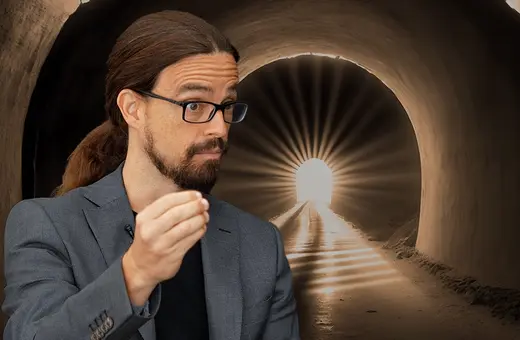Is simplicity the path to truth, or a dangerous illusion? Occam’s razor is often taken as a guiding principle of science and rational thought, but theoretical physicist Jim Al-Khalili argues that its appeal conceals a deeper problem. From cosmic models to political debate, the desire for tidy explanations can obscure the messy, complex reality and lead us astray.
This essay was inspired by his book, The Joy of Science (Princeton University Press) for OpenMind.
We hear all the time that the simplest explanations are usually the right ones. This truth-testing idea—known as Occham’s razor, after the English medieval philosopher William of Occham—has been embraced by no less authorities than Isaac Newton and Albert Einstein. Today scientists invoke Occham’s razor on topics ranging from Covid’s origins to cosmic dark matter, while folks debating a subject on social media regularly invoke it as their final arbiter. After all, why complicate something more than you need to? Isn’t it better to shave ideas down to their essential truths?
Occham’s razor sounds logical and definitive, which is exactly what makes it dangerous. Not only is the assumption of simplicity often false, but following it blindly can lead to serious misunderstandings, both in science and in everyday life.
A well-known historical validation of the principle of simplicity in science was in the overthrow of the geocentric model of the universe. The ancient Greeks codified a cosmology in which Earth was motionless while the sun, moon, planets, and stars all moved around it in perfect circular paths. That model held sway for nearly 2,000 years, despite becoming increasingly cumbersome as it was modified to account for the observed movements of planets like Mars, which was seen to slow down, speed up, and sometimes even double back on itself.
___
If we are to truly apply Occham’s razor to life on Earth, then surely the nonscientific theory of creationism is far simpler than Darwinian evolution.
___
The Greeks attempted to account for this “retrograde” motion of Mars by assuming that it followed a secondary, smaller circular path, called an epicycle, that was bolted onto its primary circular motion around Earth. Later, improved observations of Mars and the other planets required further tinkering with the geocentric model, such as adding epicycles on top of epicycles and shifting Earth slightly away from the center of all the other bodies’ orbits.
If we are to truly apply Occham’s razor to life on Earth, then surely the nonscientific theory of creationism is far simpler than Darwinian evolution.
Then, in the 16th century, Nicolaus Copernicus swept away this makeshift model and replaced it with his much simpler heliocentric picture in which the sun, not Earth, is at the center of the universe. In this view, the complicated motions of Mars as seen from Earth could be explained as a consequence of the two planets orbiting the sun at different distances and speeds. Both the Earth-centered and sun-centered models worked, in the sense that they predicted the motions of heavenly bodies reasonably well, but we now know that only one of them is correct: the Copernican model, the one without all the clumsy extras. This, we are told, is Occham’s razor in action.






















Join the conversation